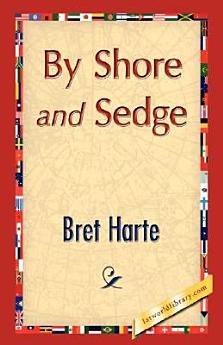By Shore and Sedge
2007. g. dec. · 1st World Publishing
E-grāmata
160
Lappuses
family_home
Piemērota
info
reportAtsauksmes un vērtējumi nav pārbaudīti. Uzzināt vairāk
Par šo e-grāmatu
On October 10, 1856, about four hundred people were camped in Tasajara Valley, California. It could not have been for the prospect, since a more barren, dreary, mono-tonous, and uninviting landscape never stretched before human eye; it could not have been for convenience or contiguity, as the nearest settlement was thirty miles away; it could not have been for health or salubrity, as the breath of the ague-haunted tules in the outlying Stockton marshes swept through the valley; it could not have been for space or comfort, for, encamped on an unlimited plain, men and women were huddled together as closely as in an urban tenement-house, without the freedom or decency of rural isolation; it could not have been for pleasant companionship, as dejection, mental anxiety, tears, and lamentation were the dominant expression; it was not a hurried flight from present or impending calamity, for the camp had been deliberately planned, and for a week pioneer wagons had been slowly arriving; it was not an irrevocable exodus, for some had already returned to their homes that others might take their places. It was simply a religious revival of one or two denominational sects, known as a "camp-meeting."
Par autoru
Bret Harte's birth year is variously given as 1836 and 1839, and his tombstone bears the date 1837. He is remembered especially for his two short stories, "The Luck of Roaring Camp" (1868) and "The Outcasts of Poker Flat" (1870), both achievements in local color. The former is the story of an orphaned baby adopted by the men in a gold-rush-era mining camp; it was dramatized by Dion Boucicault in 1894. The latter is a tale about four undesirables expelled from a mining camp and their losing battle against a blizzard. Although he was born in the East and lived there and in Europe most of his life, Harte's 17 years of residence in California have associated him most closely with that state, and the scenes of all his successful stories are set in the West. His contemporary sketches of life in San Francisco during the 1860s, written with Mark Twain, were first collected in book form as Sketches of the Sixties (1926). When he went east again to settle in Boston in 1871, his talent seems to have deserted him. Much of his later life was spent in England. Today, his formerly out-of-print stories are available in reprint versions from Ayer Publishers.
Novērtējiet šo e-grāmatu
Izsakiet savu viedokli!
Informācija lasīšanai
Viedtālruņi un planšetdatori
Instalējiet lietotni Google Play grāmatas Android ierīcēm un iPad planšetdatoriem/iPhone tālruņiem. Lietotne tiks automātiski sinhronizēta ar jūsu kontu un ļaus lasīt saturu tiešsaistē vai bezsaistē neatkarīgi no jūsu atrašanās vietas.
Klēpjdatori un galddatori
Varat klausīties pakalpojumā Google Play iegādātās audiogrāmatas, izmantojot datora tīmekļa pārlūkprogrammu.
E-lasītāji un citas ierīces
Lai lasītu grāmatas tādās elektroniskās tintes ierīcēs kā Kobo e-lasītāji, nepieciešams lejupielādēt failu un pārsūtīt to uz savu ierīci. Izpildiet palīdzības centrā sniegtos detalizētos norādījumus, lai pārsūtītu failus uz atbalstītiem e-lasītājiem.






